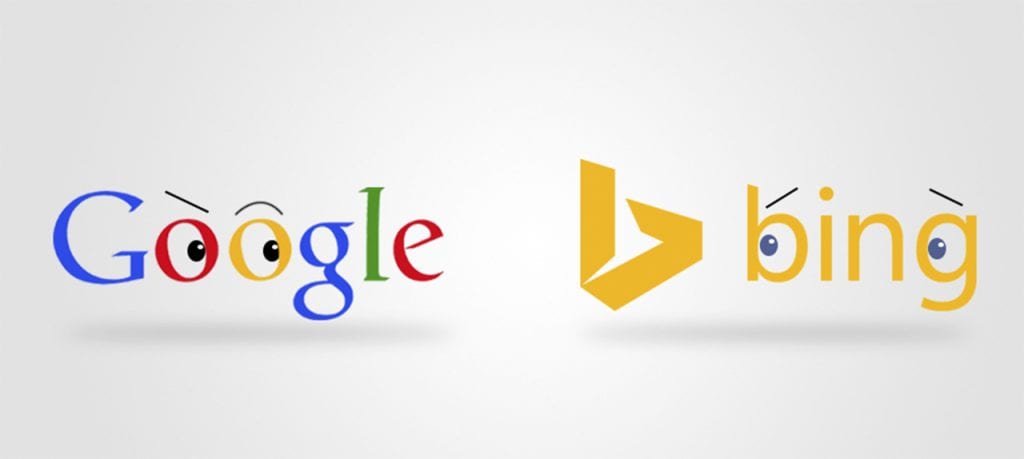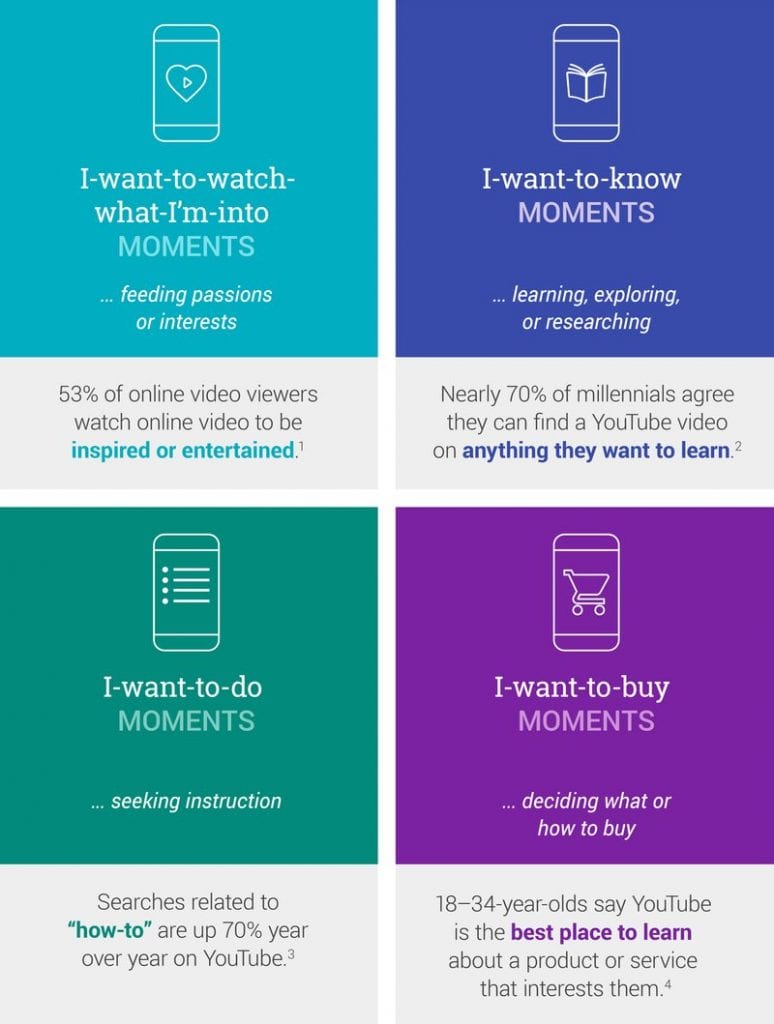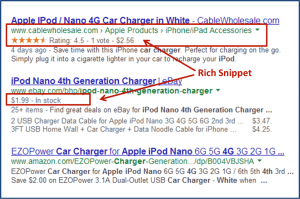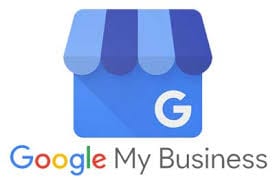At the intersection of content and commerce, at the tipping point between your organization’s brand identity and discovery by your target audience, stands a powerful marketing medium known as Search Engine Optimization or “SEO.”
No other marcom discipline allows you to surface your content or expose your product and service attributes in a way that maps directly to the search queries of your customer segments. If search is a medium of intentions, then SEO is the way a company can share in its users intent and solution-finding and meet the market’s demand for information — at the point of real interest.
Larry Sivitz has been in the unique position of “covering” the search engine advertising industry as both a journalist and a practitioner since its formation.
His semiannual pilgrimages to Mountain View and the Googleplex culminated in a brokered deal at the start of the decade between Corbis and Google to help feed a new generation of visual search. A Certified Google professional, he also served on the pre-launch Bing Advisory Committee when the search engine was managed by one Satya Nadella.
On the “client side,” he has created the SEO templates put in place for over 2,000 dentists and orthodontists by Sesame Communications, helped home energy products producer Rheem.com add close to 35,000 links, and optimized the online vending of mobile content for MLB, Hasbro, the WPT and Marvel.
 Since Google and Bing took over for Alta Vista, Excite, Northern Light and Metacrawler, his interviews (as a journalist and analyst) have included Dr. Eric Schmidt, Jeff Bezos, Danny Sullivan, Vanessa Fox, Rand Fishkin, and dozens more on the engineering, marketing and analytics sides of SEO.
Since Google and Bing took over for Alta Vista, Excite, Northern Light and Metacrawler, his interviews (as a journalist and analyst) have included Dr. Eric Schmidt, Jeff Bezos, Danny Sullivan, Vanessa Fox, Rand Fishkin, and dozens more on the engineering, marketing and analytics sides of SEO.
Suffice to say, you will not find a more authentic, incisive or honest description of the “How Tos” of SEO — what is driving the industry right now and how we can all ”skate to where the puck is moving” in order to score big.
Our Seattle24x7 “How To” Interview on SEO is a special gift of the season.

Seattle24x7: Welcome to another Seattle24x7 “How To Interview,” Larry. Let’s start with an appetizer of alphabet soup. What is SEO?
Larry: My definition of search engine optimization, or “SEO,” is that it is a multi-channel methodology that combines positioning strategy, tagging techniques, content management and community relations for the purpose of increasing the traffic to a website or another online asset.
What we hope to achieve with SEO is another acronym, “CRO” or Conversion Rate Optimization. By establishing authority in the search results pages with high ranking, relevant content that engages the reader, our aim is to attract the most qualified prospects for conversion.
This combination of search quality and geo-local proximity drives traffic from the new gatekeepers: Google, YouTube, Bing, Amazon, Apple, Baidu, Yandex, Yelp and countless other engines and resource directories to our landing pages.
Seattle24x7: Have search engines become the new guardians at the gate?
Larry: In most Web browsers, the default search engine is an interim, often integral, step in ushering the visitor to their final destination. Even if a visitor thinks they remember your Web address, they will still visit Google or Bing first to make sure they have the correct URL (or be taken to the search engine if they type any part of the name into the address bar). The Search Engine Results Page (or “SERP” for short) has become the “virtual front door,” the “virtual lobby,” and the “directory signage or office directory” for nearly every business.
Seattle24x7: Everyone talks about SEO raising online visibility. What we are talking about are brand impressions?
Larry: Correct, SEO allows you to make branded impressions in several ways.
 First, an organic listing in the universal search results can include “stars”
First, an organic listing in the universal search results can include “stars”
indicating positive user reviews.
An organic listing can also include structured data in a “rich snippet” containing such properties as photos, videos, articles, event dates and times, menus, business hours and more.
Today’s organic listing has also expanded to feature indented “Site Links” which are links to deeper departments or sections inside a Web site. No longer is Web traffic delivered solely through the front door of a home page.
A Knowledge Graph may also be present on the right sidebar containing more information about you and/or your business including social media links.
A local listing in Google Maps connects to a Google My Business profile and will also link to driving directions for businesses that are in proximity to the searcher’s location.
A graphical image representing your product or service may also appear on the universal results page if it is one of the top three images for the keyword or phrase that appear in Google Images.
Then there are social media call-outs such as a timely, relevant Twitter Tweet.
All of the above are organic search listings.
 Impressions come first. But in the final analysis, the truest measure of effective SEO is how it leads to successful conversions by engaging and converting the most qualified candidates for your content and your offer.
Impressions come first. But in the final analysis, the truest measure of effective SEO is how it leads to successful conversions by engaging and converting the most qualified candidates for your content and your offer.
Seattle24x7: How do organic results compare or compete with paid search engine advertising? Each of the organic categories you describe seems to have been subordinated by paid advertising placements.
Larry: With a paid search engine ad on the search engine results page, (formerly called AdWords, now regarded generally as Google Advertising), the highest ranking ads will usually appear above the organic search results, particularly on a mobile device where the viewport or visible area is not just ”above the fold” but at the top of the smartphone screen.
With a paid PLA, or Product Listing Ad, (requiring a merchant account), actual pictures of merchandise populate the search results page as thumbnails.
Paid ads can also appear in the Geo-Local Maps section, be it a 3-pack, 5-pack, or 7-pack.
As a result, and the fact that search engines have introduced expanded listings for both paid and organic advertising, the amount of “virtual real estate” that remains for organic results has been reduced. But don’t let that deter you.
 What is most significant is that the “lion’s share” of online search behavior, more than two-thirds of the clicks made on the page are on organic search results. On the first page alone, the first five organic results account for 67.60% of all the clicks.
What is most significant is that the “lion’s share” of online search behavior, more than two-thirds of the clicks made on the page are on organic search results. On the first page alone, the first five organic results account for 67.60% of all the clicks.
Seattle24x7: Is the commercialization of search or profit-per-square-pixel of paid search advertising a threat to organic search results?
Larry: To the contrary, sponsored search ads alongside organic results can work together, and foster a synergetic relationship depending on where the searcher is in his or her “customer journey.”
One way to look at search is as a series of intent-based “micro-moments“ which can be described as “I want to know, I want to go, I want to do and I want to buy.”
The “I Want to Know” moments are where the information you have to offer fulfills the searcher’s need to know at the research or fact-gathering phase. What’s happening in the news? What are healthy breakfast choices? What’s the return policy at this business?
The “I Want to Go” moments are where the searchers are seeking out a particular destination, be it travel information, events or accommodations, a restaurant or just driving directions to your store. Proximity has a strong role to play at this stage in the process. What’s near me?
The “I Want to Do” moment meets Searchers when they are looking to take specific action by finding answers that solve a particular problem or teach a certain skill, from learning to tie a tie to finding the perfect recipe for homemade pasta.
In the “I Want to Buy” moment, consumers are ready to buy but may not know how or how much. They are closest to making reservations, bookings or a purchase online. At this point in the customer journey, searchers are more amenable to a paid search ad, especially if it advertises what’s “on sale” or makes a “special offer.”

A marketer who creates social content with real-time, micro-moment relevance can influence brand preference over competitors. How much? The Wall Street Journal reports 69% of online customers say the quality, timing, or relevance of a company’s message influence their perception of a brand.
Seattle24x7: How would you compare the ROI between organic search and paid advertising?
Larry: An over-simplification that is, nevertheless, a valid comparison is that paid search advertising is lead generation that you rent or lease, whereas organic lead generation is something you own. In other words, when you need to produce leads right away, you can create an ad and elevate your bidding in a cost-per-click (CPC) campaign and see results fairly quickly (although not quite as quickly as before). In contrast, SEO takes longer to gain traction since it depends not only on composing, formatting and tagging meaningful content but building authoritative backlinks from outside sources that “endorse” the content.
I would say that in paid advertising there is a “calculus for success” based on the number of leads generated, divided by the percentage rate of conversions and the bid cost vs. the order margin of making a sale.
In SEO, there is a “geometry for success” based on configuring content in a site’s architecture, having it well-positioned to emphasize specialization, and making sure it is correctly tagged, cross-linked and endorsed by credible industry partners.
Given the escalating cost of advertising keywords in pay-per-click auctions for so many industries, the long-term ROI for organic search is far more valuable than pay-per-click (PPC), not to mention gaining recognition for the content the company is best known for and that drives SEO in the first place.
Seattle24x7: You mention SEO being comprised of certain methodologies. Is there a particular approach to developing an SEO campaign that you recommend?
Larry: Our search marketing company, SearchWrite, adopts a Persona-based approach to search advertising, something that was delineated in the book “Marketing in the Age of Google,” by founding Google Webmaster Central architect and Google Ambassador, Vanessa Fox. (I was pleased to be asked to write a short preamble for that book).
 Using a Persona-based method, the exercise is to map specific audiences to conversion events and motivators.
Using a Persona-based method, the exercise is to map specific audiences to conversion events and motivators.
First, we work with the client to determine which personas are most important to the business.
Next, we find out what problems these target audience segments need to solve? What tasks are they trying to accomplish?
Then we examine whether the content being provided is meeting the needs of the Persona. Will the cluster of keywords searchers employ be best served by an overall site message, landing page/category, set of blog posts, the About page, or another component?
From this, you can determine gaps (new pages needed), adjustments (edits to existing pages needed) and consolidation (when multiple pages fill the same need).
Finally, we research and map clusters of search terms (“keywords”) that lead to solving the problems or accomplishing the tasks facing these Personas so they find their solutions and accomplish their tasks.
Seattle24x7: You spoke earlier about submitting structured data to the search engines which is a rather technical topic. Are “Rich snippets” the future of search?
Larry: The opportunity to enhance search listings with structured microdata using JSON-LD, RDFa microformats or Schema.org properties is not so much the future as it is the present.
By highlighting select data points, rich snippets can lead to greater user engagement and help pre-qualify site visitors, an especially beneficial component for e-commerce sites.
“Rich Cards” are a good example of how search engines like Google are enhancing the mobile user experience with pre-formatted content. Other examples for structured data include using Open Graph markup to specify a Facebook title and description or creating a Twitter Card.
While structured data markup for rich snippets is not interpreted as an independent ranking signal, it can generate indirect SEO benefits by making your page more easily indexable and providing more accurate and targeted metadata.
Unfortunately, there is no guarantee that a search engine will accept your snippets, but the effort will be well received if it is done properly and improves the user experience. Google offers several tools to test markup code and troubleshoot errors.
Seattle24x7: Are there other techniques for making an organic search listing perform better?
Larry: Indeed there are! When you think of a search listing, you can break it down into at least two parts. The first is the “headline” which is the Title tag of the particular page being shown.
But think about this — most page titles don’t perform like advertising headlines, do they? Usually, they make the mistake of containing the name of the company and possibly a keyword or tagline. Instead, the Title tag should be a “Call-to-Action,” ideally using a verb along with the subject. The name of the business is far less relevant and can usually be spotted in the URL.
Why not include your company name in the Title tag? Searchers are entering a search term for a product, service or solution they want to find and that’s where you want to be discovered. If they are entering the name of your company in the search box, well, they already know it. There is no need to have your company name in the Title tag. (It should appear in the Footer of every page along with your address and phone).
Secondly, the descriptive copy, or snippet, is usually comprised of data excerpted from the Web page revealing the keyword(s) and displaying those words in the text of the page. But not always. If the search term does not appear on the page, your meta-description tag may be used instead of a snippet. For those cases, it should be a compelling statement that will build interest and drive traffic.
In summary, think of the metadata in your listing just like an ad. Structured data notwithstanding.
Seattle24x7: Many firms struggle with Local SEO and Map listings. What are the best practices for being found locally?
 Larry: There are a number of steps that are necessary to show up in Geo-Local search results. Since these results invariably link to turn-by-turn driving directions by location, the search engines will not tolerate nor risk showing any listing where the company’s address is inconsistent among multiple directories.
Larry: There are a number of steps that are necessary to show up in Geo-Local search results. Since these results invariably link to turn-by-turn driving directions by location, the search engines will not tolerate nor risk showing any listing where the company’s address is inconsistent among multiple directories.
The “NAP (Name, Address and Phone)” must be 100% homogeneous across the Net which can be a huge obstacle for firms that are making an address change.
In addition, each location in an organization will benefit from having its own landing page, often with an embedded map and other location-based tags.
Proximity to the searcher’s location and the “centroid” map pin is also a factor. The centroid is not the nucleus of a downtown area, per say, but the center of a district for a particular type of business (financial, fashion, market leaders in a given category). User reviews are another factor.
Seattle24x7: What importance do you place on social media in terms of SEO?
Larry: I may have a different answer for you than the standard refrain. While there is no question that social media presence has been added to search algorithms as a ranking signal, my opinion as to the “net worth” of social media is as a factor in Website freshness and recency.
What I mean is that there is a natural decay in search engine ranking in the absence of any recent activity, including building new links or publishing new content. The days of the “set it and forget it” Website are long gone. Websites want to maintain fresh content.
![]() The act of blogging, tweeting or posting videos to YouTube (the second largest search engine on the planet), or uploading images to Instagram or Pinterest can be synchronized with Website content, not only by using automated solutions like HootSuite or Buffer, but with new content pages, which is what is created by blogging. Tending to the garden keeps it fresh.
The act of blogging, tweeting or posting videos to YouTube (the second largest search engine on the planet), or uploading images to Instagram or Pinterest can be synchronized with Website content, not only by using automated solutions like HootSuite or Buffer, but with new content pages, which is what is created by blogging. Tending to the garden keeps it fresh.
Speaking of blogging, there is also a decay as the blog date fades into the past and sinks lower in the stack of the blog interface which is chronological by design. We recommend a blog layout that keeps top posts on the surface of the blog, such as in a horizontal grid versus a vertical or hierarchical pecking order.
We’re very fond of WordPress for its plugin architecture like Yet Another Related Post, a plugin that links blog posts together thematically and can also cross-link keywords. Say what you will, platforms like Drupal are swell for membership communities or large datasets, but I find no comparison to the digital dexterity of WordPress compared to Drupal when it comes to SEO. It’s not a question of adequacy, but versatility and performance.
Seattle24x7: Google My Business has become a hub for business information and user reviews. Does this fall under the rubric of SEO?
Larry: As business profiles go, Google My Business has become the heart of the Google ecosystem and the nerve center for customer reviews that correlate with stars in organic listings. Companies can post photographs, videos and even immersive 360° videos of their storefronts and showrooms through a Google-approved, Street View videographer. Customers can also post their own photos and videos of their experiences. A 30-second video can also be posted to Google Maps.
This is simply an essential play for a local marketer.
Seattle24x7: Why do you emphasize positioning strategy in SEO? That sounds like a best-kept secret.
Larry: Let’s say you are an image enhancement software company, or a photo lab, or you’ve invented a new camera lens, or even a new camera. How do you expect to compete with the Nikons, Canons or Fujifilms of the world? How can you show up in search results against product review sites in photography, or compete against product-for-sale sites like Amazon, BestBuy or Walmart? The answer is Positioning.
Since you cannot outspend or outmatch these entrenched market leaders, you can only outflank them. To mix metaphors, that means not running the ball straight up the middle but calling an “end-around” play. Find the point of penetration in the marketing grid where you can create an opening. That is what we call “S.C.O.P.E.” an acronym for Search Marketing Content Positioning and Engagement. That is the “short answer.” For the longer one, contact SearchWrite!
Seattle24x7: Switching to the dark side of SEO, so much Spam inundates the average email inbox hawking “guaranteed number one rankings” Is it a joke?
Larry: Not a very funny joke. An SEO “parlor trick” is to sell you the claim about a #1 ranking, collect your money, and then show you how you rank #1 for your own name or the name of your company —which you should, otherwise you may be a victim of trademark or copyright infringement. Everyone should rank #1 for their own business name, product name(s) and address. The challenge is to rank for the categories of service or products you offer, the generic search terms people use to find you.
Also, keep in mind that, unless you are using an anonymous VPN connection to surf the Web, your search results are personalized according to your search history and location. What you are viewing is not the same thing that your customers may be seeing.
Seattle24x7: Why does so much Spam surround the marketing of SEO itself?
Larry: Largely because most buyers are uneducated about search and cannot distinguish between the genuine article and the imposters. Believe it or not, the flood of email promoting spurious search engine advertising comes not from search marketing firms but from boiler room operations that are trying to attract leads they can sell to actual search marketing firms. These solicitations will promise anything in order to capture your name and email address. It gives SEO a black eye!
Seattle24x7: The bottom line is that there is no more measurable or accountable form of marketing that exists online.
Larry: SEO is best understood by looking at a number of key performance indicators or KPI’s. Did you know you could do that with content? Google lets you define “conversion events” by page views as well as sales.
For example, we use Google Analytics to assign content values to the different pages of a Website. During an average Web visit, a customer will click through several pages in a clickstream. By adding up the page values of the stream, we can determine what a particular Website visit was “worth” and compare which sessions and clickpaths were the most valuable, tracking what content is being looked at, and for how long. Understanding how clickstreams and content motivate conversion takes SEO to the next level.
 Seattle24x7: Any SEO advice for the holidays?
Seattle24x7: Any SEO advice for the holidays?
Larry: For the holidays, if you’re an e-commerce or packaged goods marketer, I’d recommend adding the word ‘gift’ to the title tags of all your product pages. That way you can attract people who are searching for salmon but are probably not interested in the Ballard Locks. They could be more interested in finding a “salmon gift.” Otherwise, enjoy the season, and contact SearchWrite to work smarter using SEO’s net gains all year long! [24×7]





















